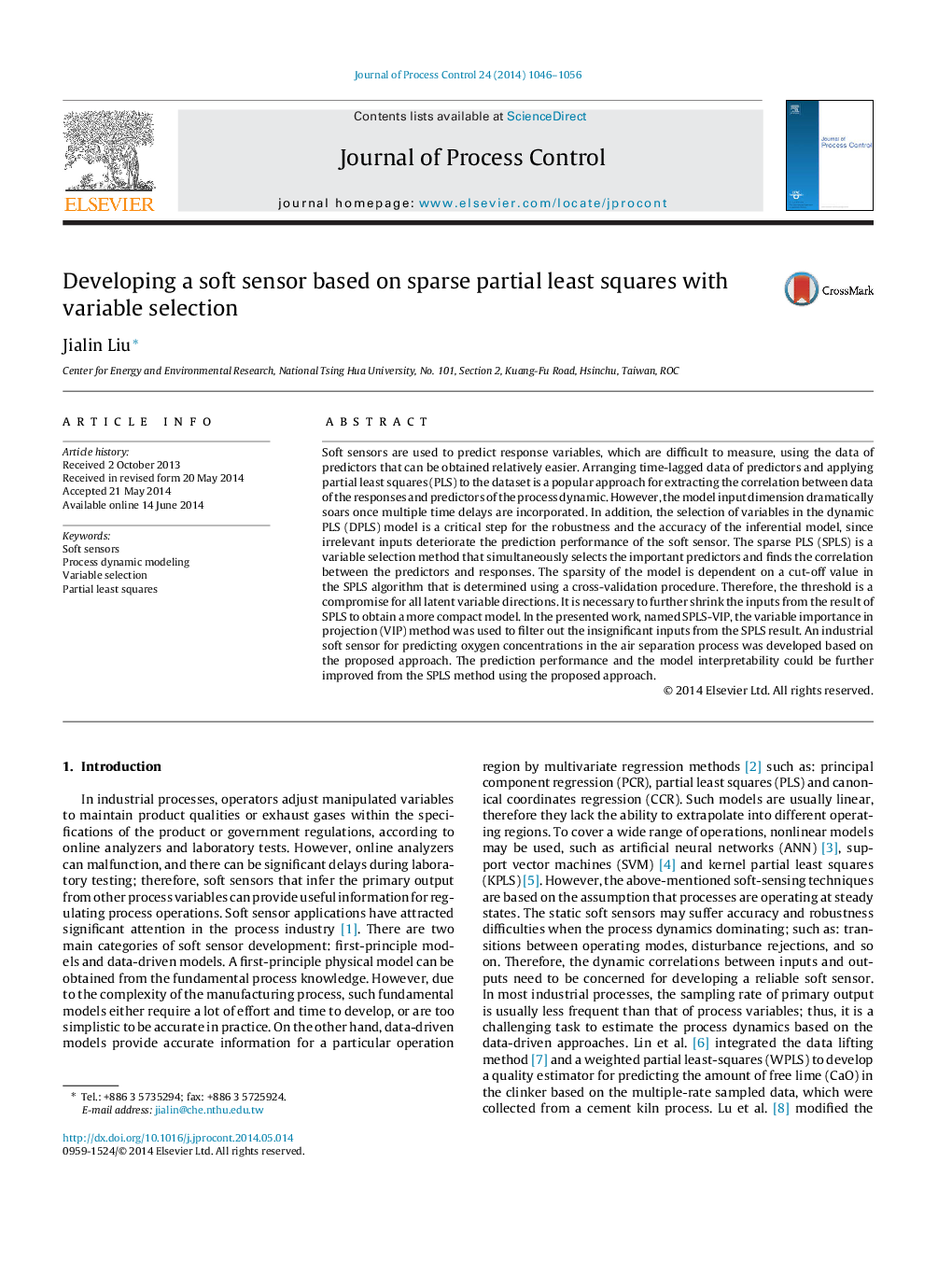| کد مقاله | کد نشریه | سال انتشار | مقاله انگلیسی | نسخه تمام متن |
|---|---|---|---|---|
| 689027 | 889586 | 2014 | 11 صفحه PDF | دانلود رایگان |
• The soft sensor for predicting oxygen concentration in an industrial air separation process is developed.
• The variable selection based on the sparse partial least squares (SPLS-VIP) is proposed.
• The model fitness using SPLS-VIP outperforms the counterparts of the PLS-based approaches.
• The drawback of selecting predictors from an improper model is demonstrated.
Soft sensors are used to predict response variables, which are difficult to measure, using the data of predictors that can be obtained relatively easier. Arranging time-lagged data of predictors and applying partial least squares (PLS) to the dataset is a popular approach for extracting the correlation between data of the responses and predictors of the process dynamic. However, the model input dimension dramatically soars once multiple time delays are incorporated. In addition, the selection of variables in the dynamic PLS (DPLS) model is a critical step for the robustness and the accuracy of the inferential model, since irrelevant inputs deteriorate the prediction performance of the soft sensor. The sparse PLS (SPLS) is a variable selection method that simultaneously selects the important predictors and finds the correlation between the predictors and responses. The sparsity of the model is dependent on a cut-off value in the SPLS algorithm that is determined using a cross-validation procedure. Therefore, the threshold is a compromise for all latent variable directions. It is necessary to further shrink the inputs from the result of SPLS to obtain a more compact model. In the presented work, named SPLS-VIP, the variable importance in projection (VIP) method was used to filter out the insignificant inputs from the SPLS result. An industrial soft sensor for predicting oxygen concentrations in the air separation process was developed based on the proposed approach. The prediction performance and the model interpretability could be further improved from the SPLS method using the proposed approach.
Journal: Journal of Process Control - Volume 24, Issue 7, July 2014, Pages 1046–1056
